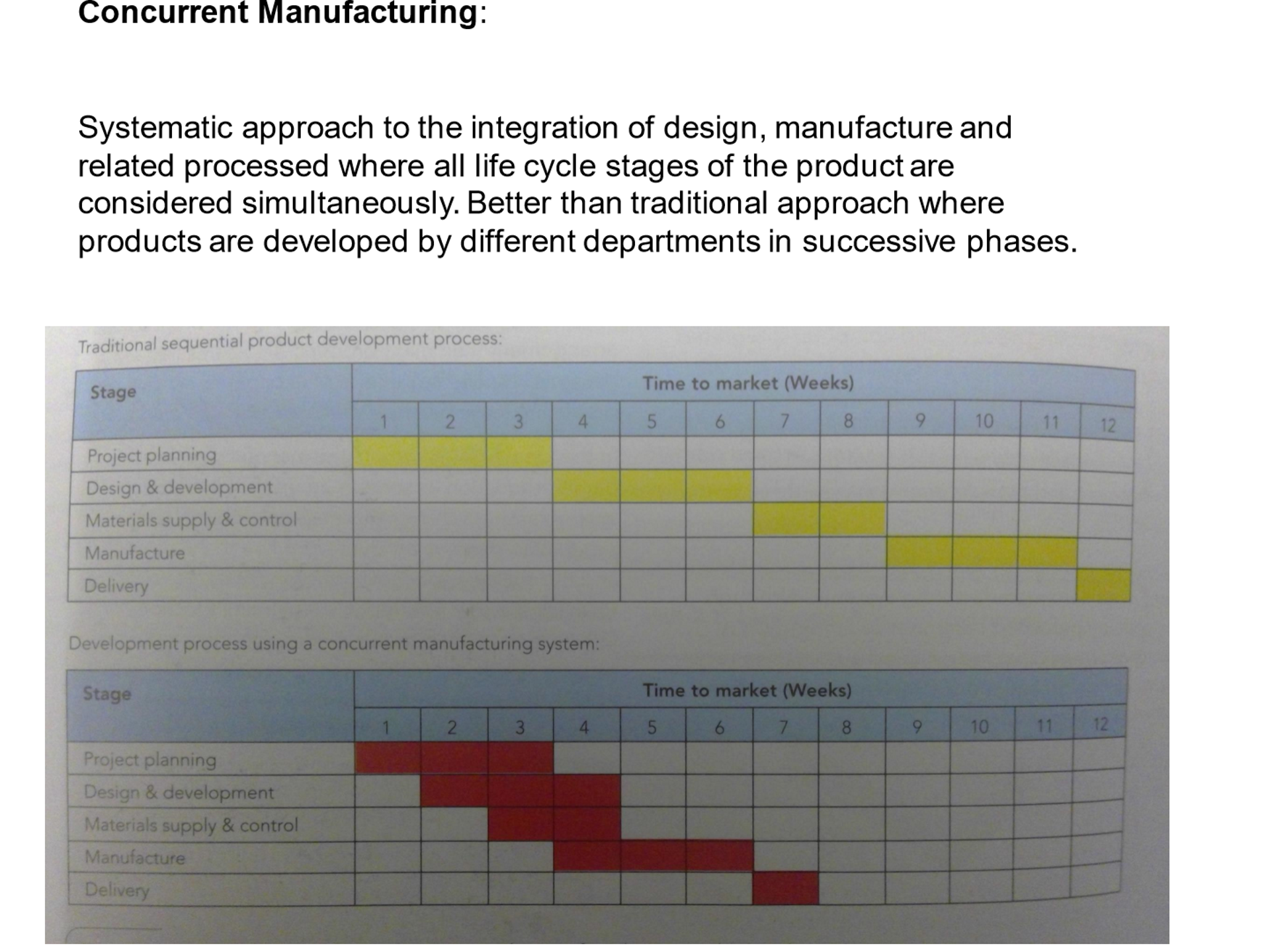Concurrent Manufacturing revision
Diagram of the Concurrent Manufacturing process:

Sample Exam Question (6 marks):
"Explain what is meant by concurrent manufacturing and assess two benefits it provides during the development of new products."
Model Answer:
Concurrent manufacturing is a production strategy where different stages of product development—such as design, engineering, and manufacturing—are carried out simultaneously rather than sequentially. This approach encourages collaboration between departments from the start of a project.
Benefit 1: Faster Time to Market (3 marks)
By working on tasks in parallel, concurrent manufacturing reduces the overall development time. For example, while a product is being designed, the manufacturing team can begin planning tooling and assembly processes, leading to quicker production once the design is finalised.
Benefit 2: Improved Communication and Fewer Errors (3 marks)
Concurrent manufacturing promotes early involvement of all departments, which improves communication. This reduces the likelihood of design errors that could cause delays later, as manufacturing and engineering teams can identify potential production issues during the design phase.
In summary, concurrent manufacturing helps streamline product development by allowing overlapping activities and encouraging teamwork, ultimately resulting in faster, more efficient production.